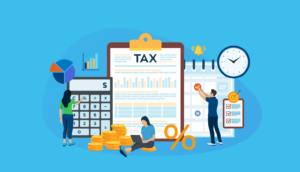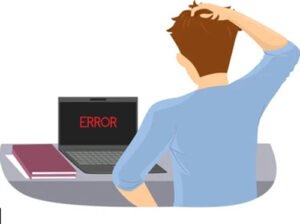Robinhood’s $0 commissions on trading stocks, ETFs, and its user-friendly interface have made it a popular investing app, particularly among beginners. This allows people to start investing without much capital. One of Robinhood’s biggest advantages is its ability to buy and sell stocks quickly and easily from your phone or laptop. The stock selling process itself is very simple for most users to understand. But there are a few things to consider before selling your stocks. In this blog-post we will go through step-by-step process on how to sell stocks on Robinhood and what are some important things to keep in mind while selling.
Setting Up for Sale
Before knowing how to cash out stocks on Robinhood, take a few important steps to get your account all set for selling.
- Send your personal details to verify your identity. This completes account setup.
- Connect a bank account to transfer cash easily.
- Turn on two-factor authentication (2FA) for extra security.
Selling stocks on Robinhood has tax implications too, as this app reports to IRS. So consider these tax implications before getting started to actually know the process of how to sell stocks on Robinhood.
Step-by Step guide on how to Sell Stocks on Robinhood

Follow these steps to sell stocks on Robinhood:
Navigating to Your Stocks
- Open the app and go to your portfolio.
- Scroll down and peek at your “Stocks Owned.”
- Select the stock you want to sell to see details.
- On its page, tap the typically green “Trade” button.
Picking How Many Shares to Sell
You can choose to sell all your shares, a specific number, or just a dollar amount. Here are the available options for you to choose from
| Option | What Happens |
| Sell All Shares | Sell off all your stocks holdings. |
| Sell Specific Shares | Enter the exact number to sell |
| Sell in Dollars | Pick a dollar value. Robinhood calculates the shares based on current price. |
But if you choose to sell in dollars, the share amount can shift slightly with price fluctuations during the sale.
Let’s consider an example:
Say you own 100 shares of ABC at $50 each. You decide to sell $1,000 worth. At $50 per share, that’s 20 shares (1,000 / 50 = 20). But if the price changes mid-sale, the share count gets adjusted to stay close to your $1,000 goal.
Choosing Order Type
When selling on Robinhood, you can choose between market order and limit order:
| Market Order | Limit Order |
| Sells ASAP at current market price | Only sells at your limit price or better |
| Guaranteed sale, but not a locked-in price | Locks in a price, but sale isn’t guaranteed |
| Best for highly liquid stocks | Best for less liquid stocks or when you want to control price |
| Risk selling at a lower price in fast-moving markets | Risk missing your sale if share price doesn’t hit limit |
Here’s how to pick your required order type:
- After setting shares to sell, tap “Order Types” in top right
- Select “Market Order” or “Limit Order”
- For limit orders, enter your target share price
- Give the details a final review before submitting
Robinhood only allows limit orders for extended-hours trading sessions( pre-market and after-hours). For most basic selling, market orders are the simplest.
Double Checking Before You Sell

Before finalizing your sale order, check these details thoroughly.
- Shares: Make sure the share amount or dollar value you’re selling is what you intended. Cross-check the quantity to avoid any unwanted transactions.
- Order Type: Confirm you picked the right order type (market or limit) for your trading style.
- Stock Name and Symbol: Verify it’s the correct stock by matching the symbol and company name, especially if you own multiple positions.
- Current Market Price: Note the market price on the trade screen for an idea of your market order execution rate or limit order baseline.
- Sale Proceeds: Review Robinhood’s estimate of your potential earnings based on shares sold and current market price. See if it matches your expectation.
- Order Expiration: For limit orders, check the expiration date/time. Keep in mind that limit orders can expire if not filled quickly enough.
Finalizing Sale
Follow these steps to finalize the sale process:
- Swipe to Submit: Give the details one final look, then swipe up to place the sell order.
- Check Order Status: You’ll immediately see your order status in Robinhood:
- Market orders usually execute right away during regular hours, showing “Executed.”
- Limit orders show as “Open” until filled at your limit price or better.
- In extended hours, orders get treated as limits, so could stay open until regular session.
- Follow Pending Orders: Orders not filled immediately will be “Pending” – check them in “Orders” section.
- Get an Execution Notice: When sell order is executed completely, Robinhood will confirm the details like shares sold, price(s), and your total earnings.
What Happens After You Sell
When you sell a stock on Robinhood, the transaction enters settlement period – finalizing the details and transferring the sale cash to your account.
Settlement Period and Transfer of Funds
For Robinhood sales, settlement typically takes two business days.
During settlement, you’ll see the sale funds as “pending” in your Robinhood account. After it’s complete, the cash gets added to your “buying power” balance. This lets you reinvest or withdraw it to your connected bank account.
You need to wait for settlement before taking money out to your bank. And then bank transfers can take another 1-3 days depending on the institution.
Receiving Sale Confirmation
Robinhood confirms your stock sale in a few ways:
- Immediately after submitting your sell order, the app shows a confirmation screen.
- Robinhood sends an email and push notification (if on) when the sale executes.
- Sale details get posted in your account’s “History” section.
Accessing Sale Records
Robinhood stores documents of your sales for personal records. You can access them by:
- Account Statements: Monthly statements list all trade activity. Find them in account “Documents.”
- Trade Confirmations: For each sale trade confirmations is generated. You can find them in your account “History.”
It’s important to keep these records for taxes, finances, and more!
Fees to Know Before Selling
When you sell stocks on Robinhood, certain fees can be charged.
1. Regulatory Fees
By law, Robinhood has to pay agencies like the SEC and FINRA to regulate trading. These costs are charged to customers for some trades, including stock sales.
| Fee | What it Covers | Amount |
| SEC Fee | fee for overseeing securities markets | $8 per $1,000,000 principal, rounded up |
| Trading Activity Fee (TAF) | Charged by FINRA for monitoring brokerages like Robinhood | $0.000166 per share (stocks) or $0.00279 per contract (options), rounded up and capped at $8.30 |
These fees are charged by law, so can be changed without prior notice.
2. Service Fees
In addition to government fees, Robinhood charges for some special services:
| Fee | What it Covers | Amount |
| Paper Statements | Monthly statements in the mail | $2 per mailing |
| Paper Confirmations | Trade confirms by mail | $2 each |
| Overnight Delivery | Getting documents delivered overnight | $20 (domestic) or $50 (international) |
E-statements, trade confirmation, and standard services are free in Robinhood.
Taxes to Consider When Selling

Taxes are implied when selling stocks on Robinhood. These can be:
- Robinhood reports all trades to the IRS, so keep accurate records of your transactions.
- Capital gains tax are implied on profits from selling stocks.
- Short-term gains (under 1 year) get taxed as regular income, up to 37% for top earners!
- Long-term gains (over 1 year) have lower tax rates, from 0% to 20% depending on income.
- Robinhood sends a Form 1099 summarizing your yearly sales and profits/losses for reporting.
Here are the capital gains tax you need to know:
- Short-term profits(stocks held less than a year): Taxed as regular income, 10% to 37% rates.
- Long-term profits (stocks held more than a year): Taxed at lower 0% to 20% rates depending on tax bracket.
- Losses can offset gains to potentially lower your tax bill.
Figuring Out Your Capital Gains
Formula for calculating Capital gain is:
Capital gain = Sale Price – Purchase Price
Say you bought for $1,000, sold for $1,500. Your capital gain would be $500.
Losses can offset gains, but if your losses exceed gains, you can deduct up to $3,000/year and any remaining loss is carried forward to next year.
It is better to contact a tax specialist for your personalized guidance, to ensure you report Robinhood sales properly.
Troubleshooting Common Selling Problems

Some troubles you may encounter while selling your stocks on Robinhood are as follows:
- Order Not Filling: If your sell doesn’t go through, maybe not enough buyers at your limit price, low trading volume, high volatility, or not enough shares available.
To fix this problem try changing the order type (market/limit), reducing the amount, or waiting for better conditions.
- Pattern Day Trading Limits: If you’re flagged as a pattern day trader (PDT) on Robinhood, There is restriction of four or more day trades within a five-day period unless you maintain a minimum account balance of $25,000.
- Account Holds: Robinhood may temporarily restrict trades for identity verification, regulations, or risk management.
- Technical Problems: If Robinhood encounter any system crashes or outages, all trading activities( including selling) can be halted temporarily..
- Unsupported Stocks: If a stock you own gets delisted from Robinhood, you’ll have to transfer the shares elsewhere to sell them.
If trouble continues, you should contact Robinhood customer support for assistance.
Conclusion
In this blog-post, we’ve discussed thoroughly about how to sell stocks on Robinhood. We initiated the process by establishing our stock-selling account, proceeded with selecting the quantity of shares and order classification, and concluded by scrutinizing and confirming the sale order.
During our exploration of selling on Robinhood, we gained insights into associated fees and tax considerations. Additionally, we delved into addressing typical issues encountered during the selling process and strategies for resolution.
You can make better decisions if you have more knowledge about a subject. So, keep learning more about effective investing strategies so you can properly capitalize on your hard-earned money.


